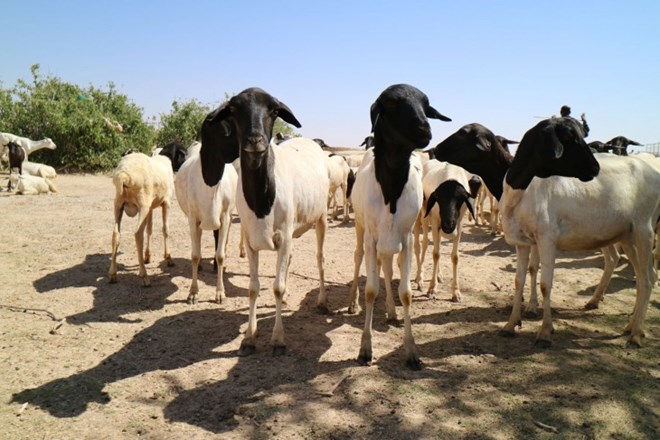
Friday January 6, 2017

Goats and sheep in Las Anod, Sool region in the northern part of Somalia. The animals are being given a shot of anti-parasitic medicine. CC BY-NC-ND / ICRC / Abdikarim Mohamed
In a crowded pen made of thorny shrub brushes and twigs, a herder pulls away a sheep and holds it long enough for Saamiya Mohamed to inject it with a dose of vitamins and anti-parasitic medicine. The small animal cries out and runs away. But it's now protected.
The injection techniques are a part of a training exercise on animal health taking place in Las Anod in the arid northern part of Somalia. Saamiya Mohamed is one of 170 community animal health workers taking part.The sheep all look identical with their all-black heads and furry white bodies. This breed of sheep, aptly named blackhead, is common here in the Sool region of northern Somalia. Bred for meat, an adult weighs 30kg to 45kg and can feed a family of five for a month.
Cows and goats are favoured for their meat and milk. A healthy adult boran bull weighs around 500kg and can sell for as much as $250; a strong goat is worth $60.
The cream of the livestock crop, though, are the region's camels. These tall graceful animals are bred for their meat, milk, and walking abilities. Their bodies are built to withstand the dry spells, and their feet are adapted to travel Somalia's vast swaths of arid land. Camels also bear a cultural significance in their use as currency for dowry or to pay off family disputes. One can sell for up to $1,000.
These animals are the lifeblood of the 60 percent of Somalis dependent on livestock, the country's biggest export commodity. Camels, cows, sheep and goats have helped Somalis cope with the difficult phases of conflict and the debilitating episodes of drought the country has experienced.
With no public veterinary service to treat livestock, community animal health workers are the only option available for farmers in Somalia seeking treatment for ailing animals. The International Committee of the Red Cross (ICRC) offers trainings for the community workers as a way of ensuring good animal health.
"We believe that community animal health workers are the way to achieving good livestock production and health. We support them with training and equipment in order to help them do their job," says Massimo Zecchini, the ICRC delegate in charge of livestock programs in Somalia.
"Indirectly, this secures the local community's means of survival," he adds.
A healthy herd is a lifeline to the Somali communities that depend on them. Support is also offered for equipment, and vet stores are replenished with medicine should they be needed. In 2016, the ICRC supported 33 pharmacies with supplies in Somalia. A total of 170 community animal health workers were trained.